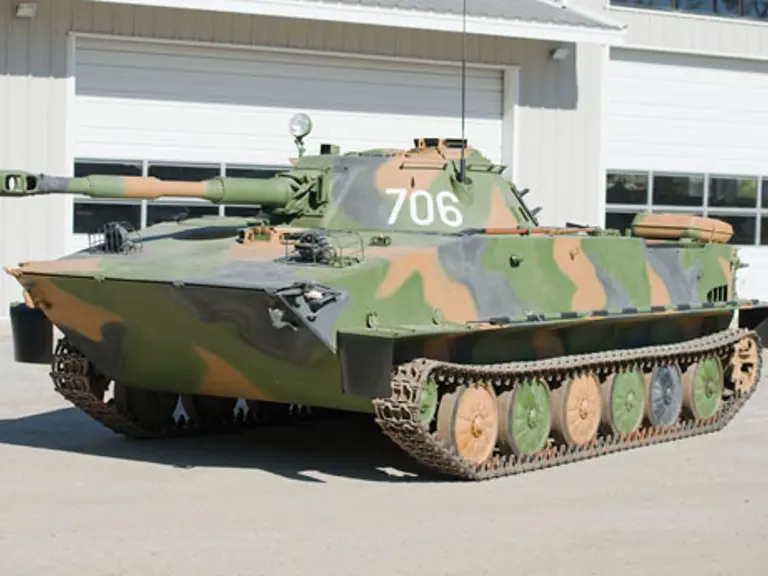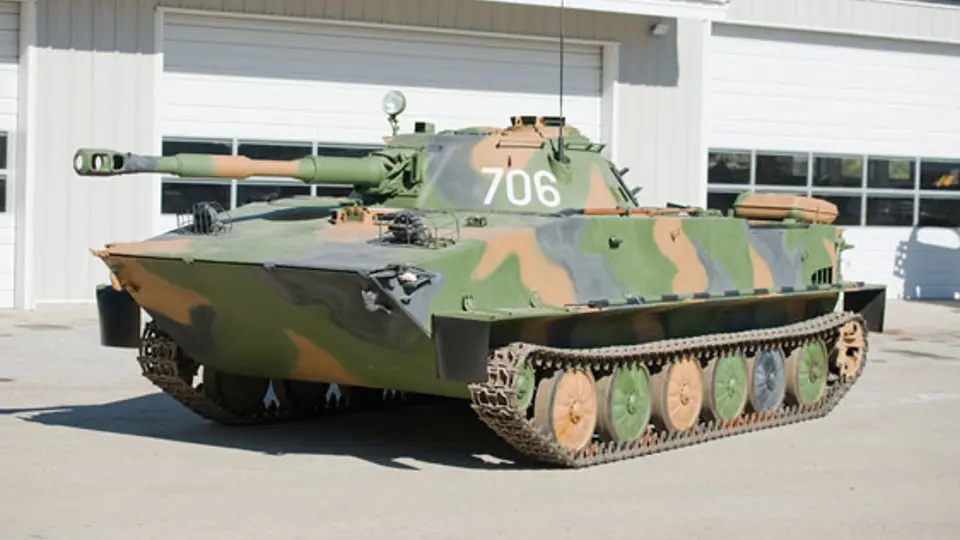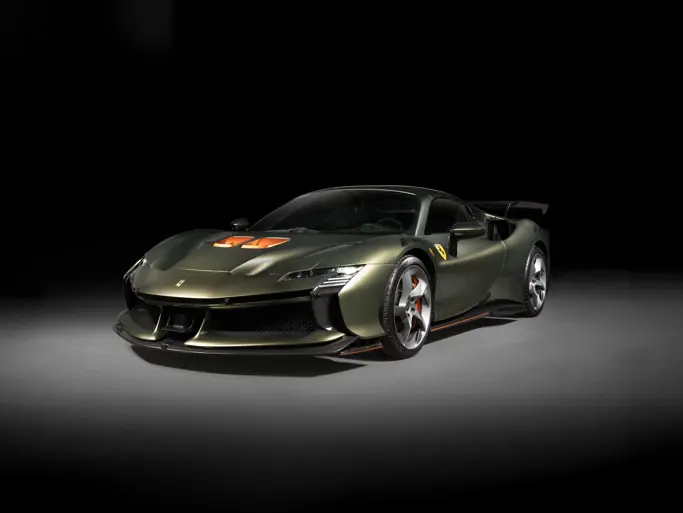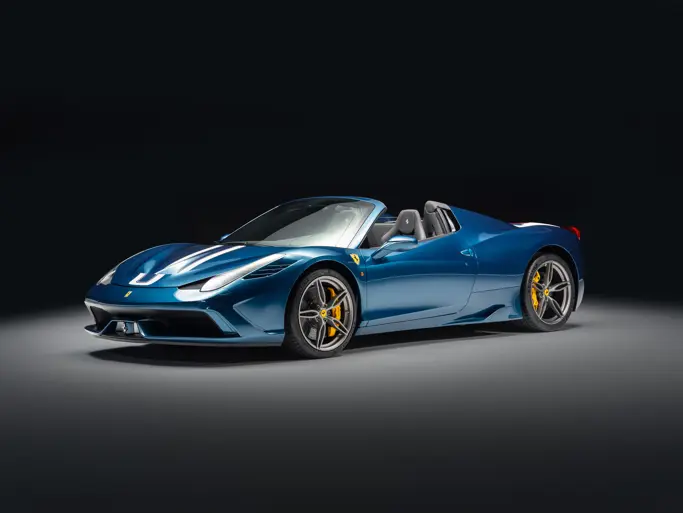 | Portola Valley, California
| Portola Valley, California
Weight: 15.7-tons (14,200-kg)
Length: 25’ 0 “ (9.34-m)
Width: 11' 1” (3.40-m)
Height: 7' 7” (2.33-m)
Crew: 3
Armor:
-Front Hull: 0.5” (13-mm)
-Turret Front: 0.6” (15-mm)
Weapons:
-Primary
3" (76.2-mm) D-56TS tank gun
-Secondary
1x 7.62-mm SGMT machine gun
-Ammunition
40 x 76.2-mm
1,000 x 7.62-mm
Engine: 6-cylinder, V-6 diesel, 240-hp
Power/weight: 15.29-hp/ton
Fuel Capacity: 66-USG (250-l)
Range: 230-miles (370-km)
Speed: 27-mph (44-km/h) on land
6.3-mph (10.2-km/h) on water
The tank being offered, PT-76B, is in excellent condition. It is a former East German Army tank. The exterior and interior paint are in near perfect condition. All exterior lights, including an infrared driving light and convoy positioning lights are present. A white-light spotlight is fitted to the right side of the turret. The wheels and tracks are in very good condition. Rubber mudflaps are fitted to the front and rear of the tank and are in like new condition. A pair of external fuel cells are securely mounted to the rear hull deck. The tank runs and drives well using fuel from its own fuel tanks. Adjustment of the shift linkage sequence is required. All crew hatches open and close normally. All periscopes are present and have clear glass. Using the manual controls, the turret rotates smoothly and the armament depresses and elevates. The gunner's telescopic sight is present and is in excellent condition with a very clear sight reticle. The interior is in excellent condition. All seats are present and are in near new condition. A radio is mounted in the vehicle. It is not known if it is operational. Several pouches for a pistol and small arms ammunition are mounted in the vehicle interior. Four ammunition boxes for the co-axial machine gun are also included. The cover holding the commander's periscopes rotates freely in its ball race. All driver's controls are present and serviceable. All interior placards are in German. The vehicles pioneer tool set includes the following: two shovels, a saw (carried inside the hull), a pick and a boat hook.
Having had to cross numerous rivers during WWII, the Soviet high command realized the need for an amphibious tank that would be able to support those crossings in the future and the work on the new amphibious tanks started soon after the end of the war. Several different versions were designed and the most successful one was chosen in 1948 for final deployment. In 1952 the tank was adopted into service under the designation PT-76.
One of the most noticeable features of the PT-76 is a large waterproof hull that is bigger than many of the much heavier tanks. The hull came out of the requirement that the tank be able to carry a squad of infantrymen on its back across a river. That gave the tank an advantage of the good (for a tank) sea keeping qualities, but also a disadvantage that it was a large, poorly armored vehicle. It is powered in the water by two water jets. It can swim with a top speed of 6.3-mph (10.2-km/h) to a distance of up to 62-miles (100-km).
As with other Soviet tanks the design was constantly modernized and the initial models soon gave way to the PT-76B which improved about everything in the tank - the gun, communication, fire control, NBC system, engine and so on. The tank also provided a useful chassis for a large number of vehicles like BTR-50 APC, ASU-85 airborne self-propelled gun, FROG surface-to-surface missile launchers, SA-6 anti-aircraft missiles and so on.
The design was very successful and became a main reconnaissance tank of the Warsaw Pact, as well as becoming a main tank of the Soviet naval infantry. 12,000 of these tanks were built in the USSR from 1953 until 1969, of which 2,000 were exported to other countries. Over 25 different armies use or have used the PT-76 and it was involved in numerous conflicts. It's most notable success was storming the Israeli Bar-Lev line across the Suez Canal in the 1973 war and success in East Pakistan while in service with India in the Indo-Pakistani War in 1971. PT-76's were also used by the North Vietnamese Army during the Vietnam War. While seeing plenty of combat against South Vietnamese armor forces later in the war, North Vietnamese PT-76's engaged U.S. tanks in battle only once, during the Battle of Ben Het, in March 1969. This was the only time any type of North Vietnamese tank engaged U.S. armor forces during the war.
Transport Cost to Storage: $1,848





